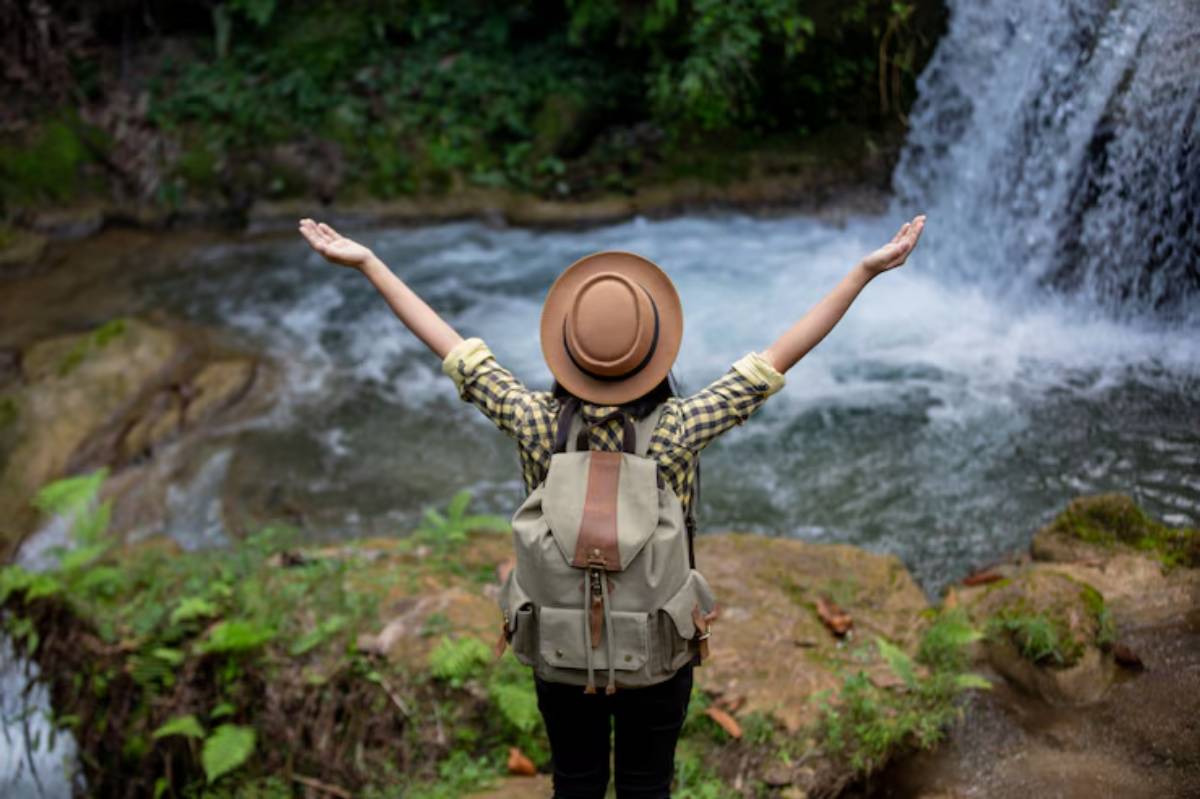The Health & Wellness Blog

Finding Stillness in Movement: Meditation Practices on the Go
Travel brings to mind crowded airports, ticking clocks, and rushing from one spot to another. It’s a world of luggage, speakers, and throngs of people. Yet, within this chaos lies a quiet space to explore. It’s a peace that can grow through thoughtful travel. In the blog, we look at how travel meditation provides the key to inner calm on the road. Whether you’re on a long-haul flight, a weekend getaway, or a work trip, these ideas can help bring calm and clarity to your journey.
Finding Stillness in Movement: Travel Meditation Practices
In our connected world, travel is essential for work, education, and fun. It opens the door to new places, people, cultures, and experiences. But with these exciting opportunities often come stress, fatigue, and sensory overload. Travel can throw us off balance, physically and mentally. That’s where meditation comes in—not as an extra burden, but as a tool to ease and enrich the travel experience.
Travel meditation isn’t about sitting cross-legged in a quiet room for an hour. It’s about adding calm to your movements. You find small pauses in the chaos. This helps you focus on the present moment. You don’t need silence to be still. You only need attention.
Key Benefits / Why It Matters
Enhancing the Travel Experience
Travel mindfulness enhances our overall experience. Meditation helps us focus and notice details in our surroundings. We are not racing between landmarks. Instead, we pay attention to the smell of street food, the colours of a market, or the flow of a new city. It allows us to leave behind lasting memories and a real connection to the places we explore. It’s easy to take travel for granted—ticking things off a list without really soaking it in. Travel meditation slows that pace and reminds us to feel the experience, not just see it.
Reducing Travel Stress
Delays, cramped plane seats, and language barriers are among the few things that really test our patience. Meditation while travelling eases physical strain and reduces emotional stress from constant movement. Taking a moment to pause and take a deep breath activates a shift from reactivity to calm control. This can help reduce heart rate, relax tension, and enhance focus, even in chaotic environments.
Meditation doesn’t eliminate delays, but it can alter how we react to them. And often, that shift is enough to turn frustration into resilience.
Promoting Personal Growth
Travel and personal growth go hand in hand. We’re pushed out of our comfort zones and invited to see the world—and ourselves—in a new light. Meditation adds another layer to this process. It helps us reflect and be curious about our thoughts and feelings. It also shows us how to face discomfort openly, not with resistance.
Mindful travel fosters a deeper sense of empathy, patience, and self-awareness. It helps us grow emotionally over time. This makes us better travelers and more grounded people.
Supporting Mental Well-Being

Meditation can help reduce anxiety. It also supports emotional balance and boosts mental clarity. When combined with travel, it becomes a powerful way to manage emotional ups and downs. If you’re prone to travel anxiety, feel lonely while away, or struggle with jet lag, even a few minutes of meditation each day can make a difference.
It’s not about forcing yourself to feel calm. It’s about creating space to notice how you feel, accept it, and gently return to the present.
Additional Expert Tips & Common Mistakes to Avoid
Embrace Flexibility
Meditating on the go requires a flexible mindset. You might not find the ideal spot or perfect moment—and that’s okay. Meditation is about practice, not perfection. You can meditate sitting in a car, waiting in a queue, or walking through a museum. It’s about adapting to your surroundings and making the most of the moment.
Rigid expectations can create frustration. Let go of the idea that meditation must look a certain way and simply meet yourself where you are.
Use Guided Meditations
There are plenty of excellent meditation apps offering sessions specifically for travellers. Guided meditations can help you relax before a flight, unwind after a long day, or stay focused during transit. Having a calm voice to follow makes it easier to stay on track, especially in noisy or unfamiliar places.
Some popular apps include Calm, Insight Timer, and Headspace. Download a few sessions before you travel in case you’re without Wi-Fi.
Avoid Overcomplicating the Practice
Many people give up on meditation because they think they’re “doing it wrong.” But there is no perfect way. You don’t need special music, incense, or a set time. Start with something simple. Sit still and notice your breath for one minute. That’s enough to begin. Over time, you can build on that foundation.
Trying too hard to “clear your mind” is another common mistake. Instead, let thoughts come and go like passing traffic. You’re just observing, not controlling.
Stay Consistent
It’s not about how long you meditate but how often. Even five minutes a day can be effective if practised consistently. Try attaching meditation to an existing routine, such as when you wake up, during a meal break, or before bed. The more regular it becomes, the easier it is to maintain while travelling.
Think of it as brushing your mind—just a bit of daily care that keeps things running smoothly.
Advanced Insights / Expert Recommendations
Incorporate Movement-Based Practices
Meditation doesn’t always mean sitting still. Walking meditation is an ingenious way to be mindful during movement. It is about paying attention to every step, feeling your feet hit the ground, and noticing the rhythm of your body. This is particularly handy at airports, parks, or on scenic walks.
Stretching mindfully or doing some yoga is always beneficial on long flights or train trips. Even just a few simple stretches, combined with deep breathing, can dissipate tension and help you get back on track.
Leverage Travel Rituals
Turn everyday travel activities into mindful rituals. For example, while journaling, take time to reflect on how you’re feeling, not just what you’re doing. When taking photos, pause to really observe your subject before clicking the shutter. This brings presence to your actions and makes the process more meaningful.
Packing your bag can be a calming experience. When done slowly, you can feel the textures of your items. It also helps you think about why you chose each thing.
Connect with Nature

Spending time in nature is one of the simplest and most powerful ways to find stillness. No matter if you’re hiking in forests, strolling on a beach, or relaxing under a tree in a park, let nature be your place to meditate. Listen to the sounds, feel the breeze, and observe the details around you.
Nature reminds us to slow down, to breathe deeply, and to reconnect with ourselves. Whenever possible, build it into your travel plans.
Practice Gratitude
Gratitude is a natural antidote to stress and dissatisfaction. Take a few moments each day to reflect on what you’re grateful for. It might be a kind stranger, a beautiful view, a smooth journey, or even a learning moment that challenged you.
Keeping a small gratitude journal or simply noting it mentally helps shift focus from what’s missing to what’s present. And in travel, that shift can make all the difference.
Conclusion: Travel Light, Travel Right
Finding stillness amid movement doesn’t mean that you need to change your travel plans; it just requires a shift in awareness. Enabling us to experience life as a process with meditation and mindfulness. They root us when everything around us is in flux.
These practices aren’t escaping the chaos; they’re learning to greet it with calm. The next time you’re preparing to go on a trip, ask yourself if you can intersperse some moments of stillness throughout the journey, and how you can do that. Breathe deliberately a couple of times at the airport. A quiet walk at sunrise. A pause to notice the world as it is.
The beauty of travel isn’t in the destination. It’s in the moments we allow ourselves to truly experience along the way. Travel light. Travel with intention. And remember: wherever you go, your breath is always with you.









